Australian Tropical Rainforest Plants - Online edition
Halfordia kendack (Montrouz.) Guillaumin

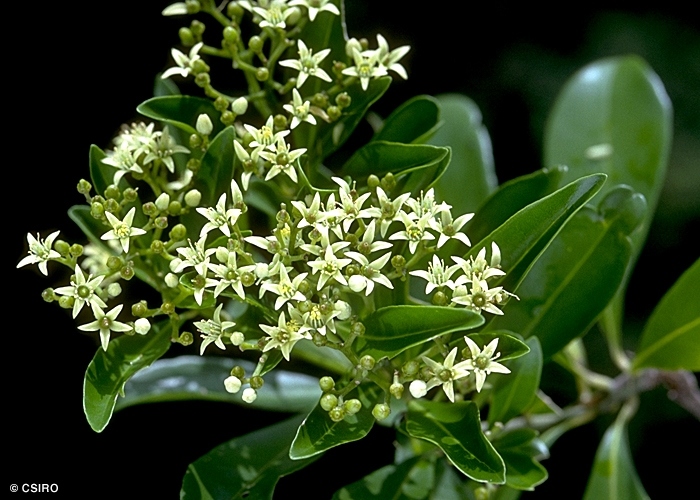

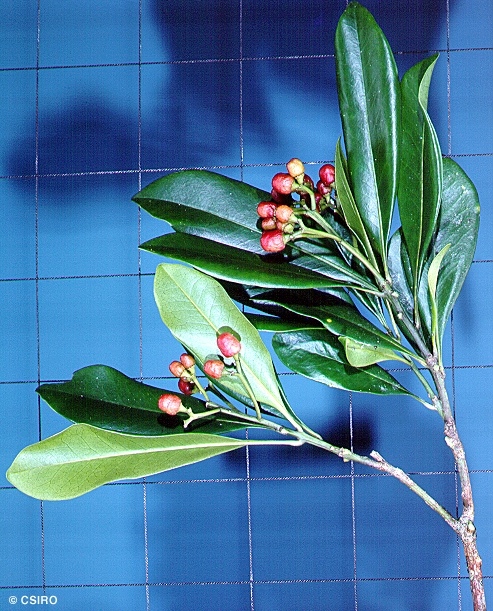

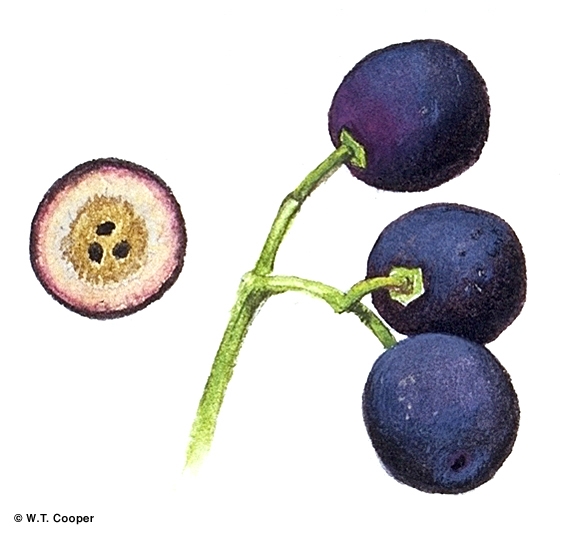
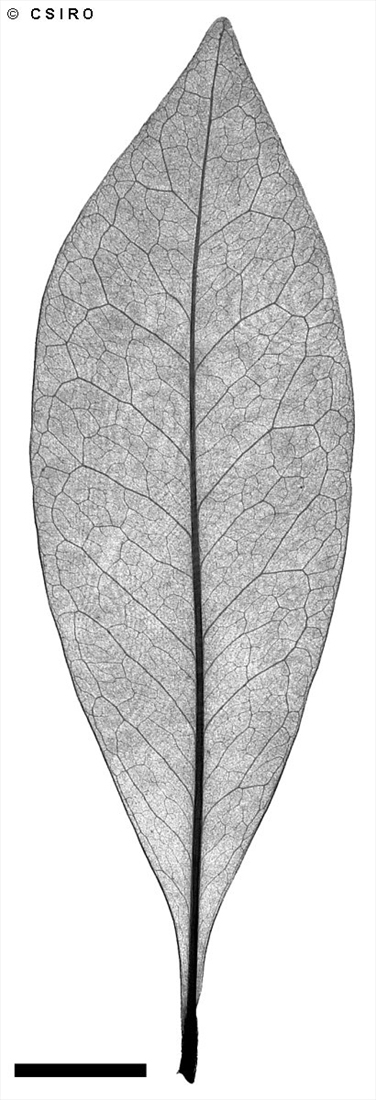
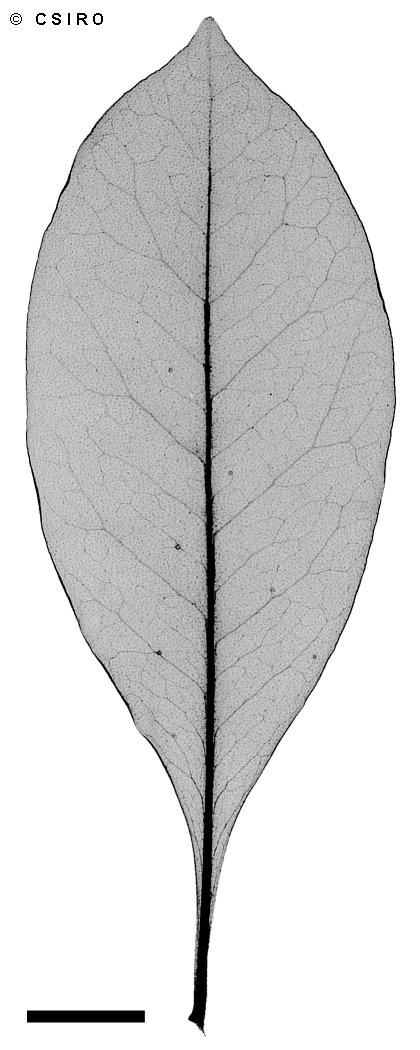


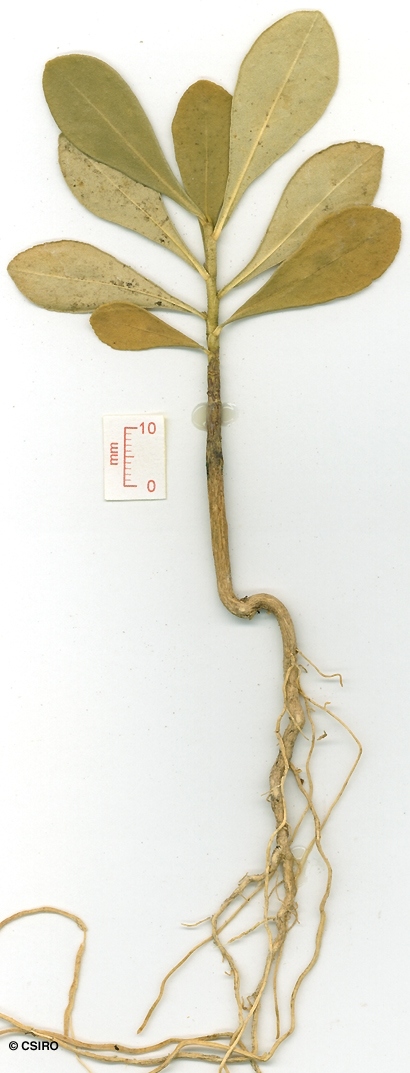

Guillaumin, A. (1911) Notulae Systematicae 2 : 98.
Kerosenewood; Southern Ghittoe; Saffronheart
Shrub, or tree to 30 m high. Bark usually pale yellowish-brown. Heartwood very hard and oily, thin slivers burn even when green.
Basal section of the petiole swollen for a short distance. Oil dots very numerous, conspicuous and closely spaced. Leaf blades about 5-14 x 1.3-6 cm. Lateral veins forming a series of loops well inside the margin, midrib green, somewhat raised on the upper surface. Leaves crowded towards the ends of the twigs. Leaf blade emitting a strong odour when crushed.
Flowers about 8-9 mm diam. on a pedicel about 4-8 mm long. Calyx lobes about 0.5-1 mm long. Petals about 4-5 mm long. Stamens ten, dimorphic, five long and five short, filaments flattened, margins hairy. Filaments about 2-3.5 mm long. Anthers about 1 mm long with a gland at the tip, a tuft of hair at apex or glabrous. Disk green. Style about 1-1.5 mm long.
Fruits about 6-12 x 10-23 mm. Calyx persistent.
Cotyledons oblong to almost linear, margins crenate. First pair of leaves with crenate margins and fairly conspicuous oil dots. At the tenth leaf stage: leaf blade obovate, apex obtuse, base attenuate, glabrous, lateral veins not obvious; oil dots numerous, either small and visible with a lens or conspicuous, easily visible to the naked eye. Leaves aromatic when crushed. Seed germination time 118 to 839 days.
Occurs in CYP, NEQ and in south eastern Queensland southwards as far as north-eastern New South Wales. Altitudinal range from sea level to 450 m. Grows in beach forest, closed forest on old sand dunes and well developed rain forest. Also occurs in New Caledonia.
An easily grown small tree that is gaining popularity in horticulture. Small white flowers are followed by black fruits that are popular with birds.
Before the development of fibregalss and carbon fibre, the timber of this species was used in the manufacture of fishing rods. Swain (1928).
This species produces a very oily, pale coloured, hard and durable timber. Old logs and branches last for many years on the forest floor and are a real prize for anyone trying to boil the billy in wet weather. The timber of living trees will burn fairly readily if it is cut into fire chips or kindling and will serve as firewood in desperate situations.
Fruit eaten by Cassowaries and other species of birds. Cooper & Cooper (1994).
Food plant for the larval stages of the Capaneus Butterfly. Common & Waterhouse (1981).
Wood specific gravity 1.10 Cause et al. (1989).





